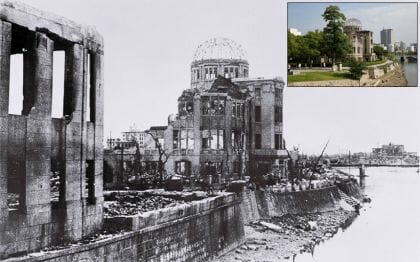It is 26th April in 1986 at 1:23am. The stillness of the night was crushed when Reactor No.4 at the Chernobyl Nuclear Power Plant exploded. It was mankind’s biggest nuclear accident in history. Acute radiation sickness killed 31 people in the first four months but the leak was blamed for thousands of cancer cases that developed across huge areas of the Ukraine, Russia and Belarus, with figures on predicted resulting deaths ranging from 4,000 to half a million.
It is predicted that eventually Chernobyl will have been responsible for up to 4,000 total deaths from cancer, according to the WHO, and for 41,000 extra cases of cancer, according to the International Journal of Cancer, but depending on treatment, not all cancers result in death.)There is still no official account of how many people suffered and died as a result of the meltdown and the health implications of the disaster have long since been discussed. Tens of thousands of residents were forced to flee towns such as Pripyat, the city next to the Chernobyl Power Plant, never to return due to the impact of the nuclear disaster and it’s consequences.

The Chernobyl explosion put 400 times more radioactive material into the Earth’s atmosphere than the atomic bomb dropped on Hiroshima (in 1945) and atomic weapons tests conducted in the 1950s and 1960s, in total, are estimated to have put up to 1,000 times more radioactive material into the atmosphere than the Chernobyl accident.
‘The Battle of Chernobyl’ as it is sometimes known, deployed an additional 600,000 workers, soldiers and miners, also called ‘liquidators’, in clean up operations.
There were almost 50,000 residents in Pripyat at the time of the accident. There was chaos during the days after the explosion. No official instructions were given to the city council. All official information was denied to the public. The Soviet authorities finally decided to act and evacuated over 120,000 residents from the area. They took only some clothes and their most prized possessions in plastic bags and left everything else behind. Then the Soviet authorities converted an area of 2600 km2 in what is now well known as the Chernobyl Exclusion Zone. 30 Years later, this Exclusion Zone remains the radioactive heart of Europe. Yet, it does not reminds on the Hiroshima area in Japan.

It is too dangerous for the people to go into the forests here… not because of the radiation (except for the Red Forest, a highly contaminated area, a few steps from Torch – the former symbol of NPP, there is 300 μSv/h.) but because of the wild animals! When you enter the Exclusion Zone there are kilometres of wilderness. It looks empty and lifeless, but there is still life. Amongst the trees you can spot some houses. A sign of the life that once was and that is now overrun by nature. For example, the wolf population is now seven times greater than in other similar, uncontaminated areas and large increases in numbers have occurred in other species such as Przewalski’s horses, wild boars, bobcats, moose and bears. Nature takes everything back very fast.
Now, three decades after the nuclear disaster, the concrete protecting the reactor is starting to crack. The concrete sarcophagus offered only a temporary solution; it was designed to last for only 20 – 30 years. The new solution is a vast steel sheath, large enough to encase the Notre Dame Cathedral in Paris, France. This curved dome has been built to one side of the melted reactor, ready to be rolled on giant rails to cover the fourth block of the plant. According to authorities, ‘the new sarcophagus is intended to last for 100 years’. This should give man enough time to develop the necessary technologies to dismantle the NPP and help the process of decontamination.

Today everything has been left as it once was, with nature taking over. But this wilderness is attracting visitors once again. Levels of radiation in some parts are almost at a normal level (as in the city of Chernobyl – <0,2 μSv/h), meaning it is safe for people to visit, if only for short periods of time!
What Do You Remember?
The anniversary is approaching and we would love to hear your memories of where you were when the disaster happened.
- What do you remember about the disaster?
- If you were in the region at the time were you forced to flee?
- How did the disaster change your country in the 30 years that followed?
Share your story and help contribute to the biggest nuclear catastrophe in history on our FB fan page



 ChernobylX
ChernobylX
 ChernobylX
ChernobylX